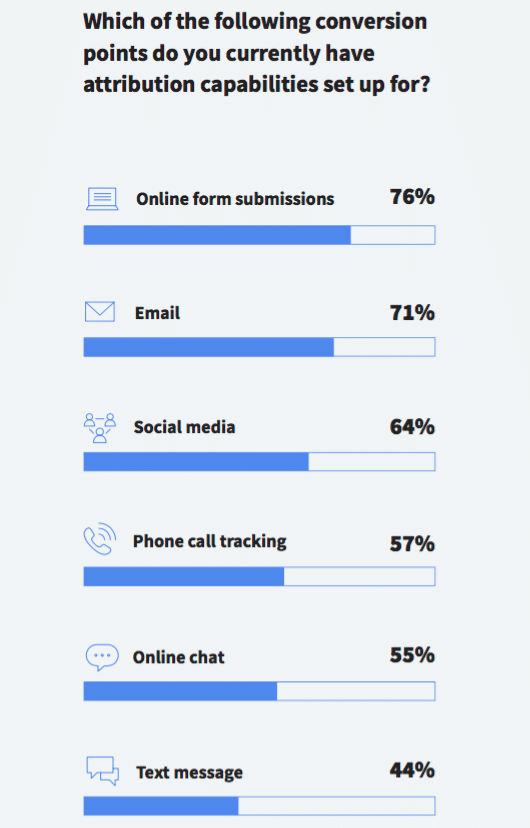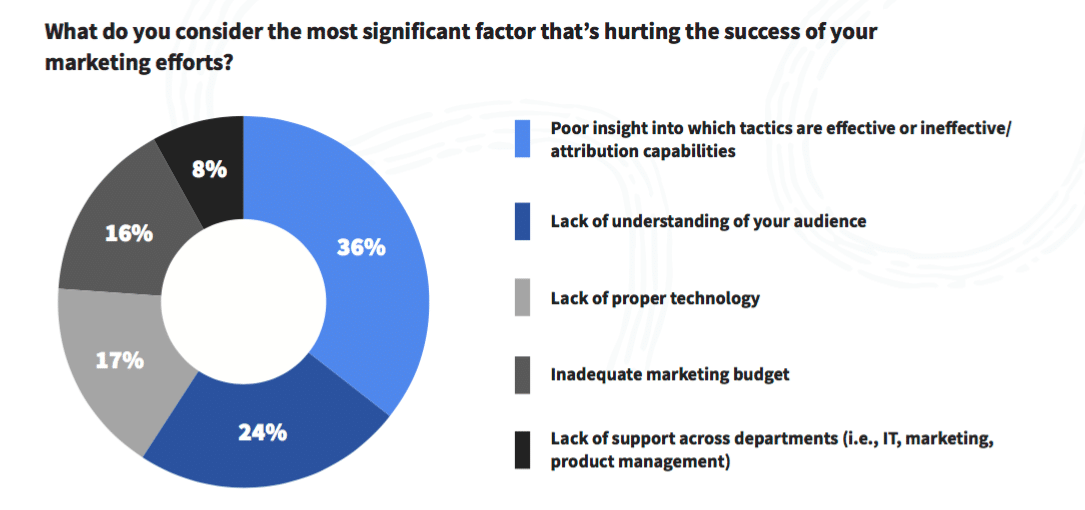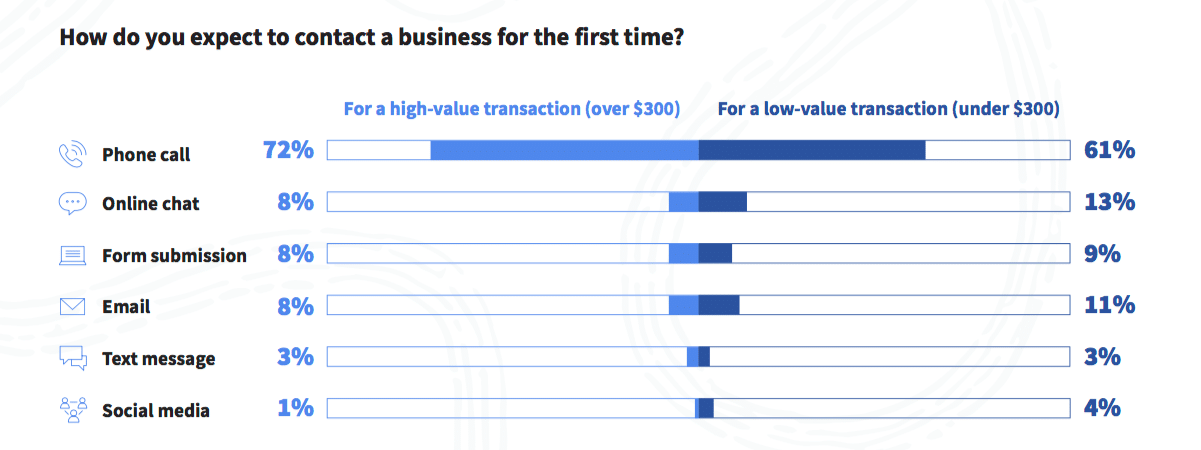According to new research from CallRail, marketers agree on one thing: everyone wants better attribution. Practically all comms pros (96 percent) agree that attribution is critical to informing and optimizing marketing decisions, and 36 percent say the lack of insight into the effectiveness of tactics is the most detrimental factor to their marketing efforts—and from a growing number of ways for consumers to get in touch with businesses to an overwhelming menu of technology platforms, the struggle to prove ROI is only going to increase.
To better understand common pain points among marketers and how attribution impacts business decisions, CallRail surveyed 300 marketers, including 75 marketers who work in agencies serving multiple clients. In addition, CallRail surveyed 1,000 U.S. consumers who have researched and purchased products and services to determine expectations customers have when engaging with organizations across conversion points. Both surveys shed light on what marketers need to do to meet consumer expectations—and where they currently stack up.
The data found that 76 percent of marketers have configured attribution for online form submissions and 71 percent support email attribution. However, fewer marketers say they support attribution for channels like social media conversions (64 percent), phone calls (57 percent) and online chat (56 percent)—indicating massive amounts of data is sitting idle when it could be used to improve the customer journey. Without marketing attribution in place across all of these touchpoints, marketers lack clear insight into what’s working and what’s not.

Additional key insights from the report include:
If you’re not tracking calls, you should be
Across industries, a phone call is the preferred method of communication for both low-value (61 percent) and high-value (72 percent) transactions, and 91 percent of consumers are more likely to trust a business if they can easily reach a person on the phone. However, only 57 percent of marketers have phone call tracking capabilities enabled. Without call tracking, marketers are missing a key opportunity to mine a wealth of information about their employees and callers, and better qualify real leads.
Customers expect immediate responses—and will move on quickly
More than a third of consumers (39 percent) said they would abandon an attempt to contact a business if the business takes too much time to reach out after an initial point of contact. Further, the majority of customers won’t wait more than 3 days after contacting a business (84 percent) before moving on to a competitor—with 29 percent of those consumers only giving businesses a day to contact them after reaching out initially. This means many businesses are losing customers because it takes them too long to reach out after an initial point of contact—many of which are phone calls.

Marketers are suffering from tech fatigue
Fifty-one percent of marketers use four or more marketing platforms and 75 percent say they spend too much time reporting on marketing performance. Marketers with five or more solutions are even more likely to say they spend too much time reporting performance (84 percent). Multiple, incompatible platforms often create more problems than they solve because they don’t integrate correctly with each other, or they might use different attribution models that provide conflicting narratives.

“While many marketers have attribution solutions in place for some customer journey touchpoints, we found that few have a truly holistic approach,” said Mary Pat Donnellon, CRO of CallRail, in a news release. “It’s important for marketers to address this gap so that they can focus attention and resources on the marketing tactics that are most valuable to their revenue growth. With every digital marketing platform offering its own set of performance data, it’s easy to understand why marketers feel overwhelmed when tackling the attribution challenge.”
For more insight into where marketers stack up with their current strategies and how consumers want to get in touch with businesses now and in the future, download the full data report here.




